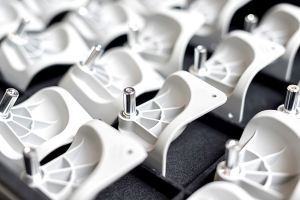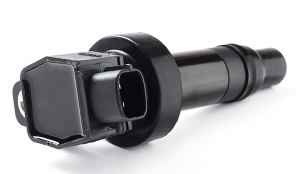Insert Molding
Insert Molding
Relucent Plastics Solutions Has Deep Experience In Both Insert Molding And Overmolding. Which Process Is Right For Your Product? Read On For Help In Determining Which Design Path To Take Then Contact Relucent Plastics Solutions For Guidance, Input And Analysis

Insert Molding
INSERT MOLDING is found in several industries and components including Medical Device, Oil & Gas, Electronics, Automotive and Consumer Products. Insert components can include fasteners, couplings, filters, terminal connectors, pins, screws, shafts, subassemblies and metal stampings.
INSERT MOLDING is typically characterized by molding these components, referred to as “inserts” directly into a part. These inserts are placed into the mold and then the plastic is injected into the cavity which encapsulates the insert. The result is a bi-component part. Depending on the design of both the plastic component and the insert, the result is typically a stronger assembly than if the insert was added as a secondary operation.
Benefits include lower costs by eliminating handling the part a second time in the secondary department and a part that has greater function that plastic alone. Products that are candidates for metal replacement can still have performance strength utilizing insert molding at critical design features.

Over Molding
OVER MOLDING is typically a plastic substrate with a “soft touch” elastomer “over molded” onto the substrate. Adhesion of the two polymer is achieved either chemically or mechanically through polymer choice and product design. Design Engineers turn to over molding as a manufacturing alternative for both aesthetic reasons as well as functional reasons. From the aesthetic point of view, over molding can add visual interest to a product while functionally, over molding can achieve multiple performance objectives:
- Sound Dampening
- Electrical Insulation
- Non-slip/grip surface
- Sealing attributes
- Shock Absorption
OVER MOLDING starts with a component referred to as a substrate which can be either plastic or metal. The substrate is placed into the mold and molded. The most common over molding material is a TPE (thermoplastic elastomer) which is similar to rubber like material in appearance, but many polymer can be used in over molding. Design and material selection are important because the two components must achieve a bond. Bonding can be developed either mechanically or chemically which is achieved through material selection and/or design.
Don’t trust just any supplier. Experience counts when it comes to insert molding and over molding. Relucent Plastics Solutions has a deep and broad experience in multiple insert and over molded components
 Relucent Plastics Solutions
Relucent Plastics Solutions